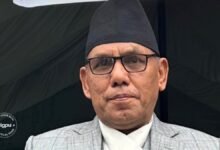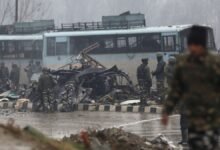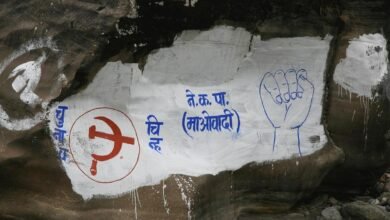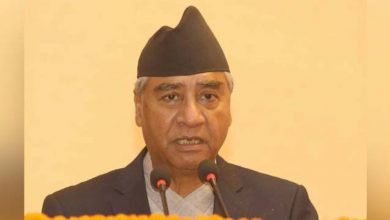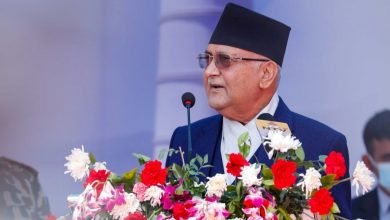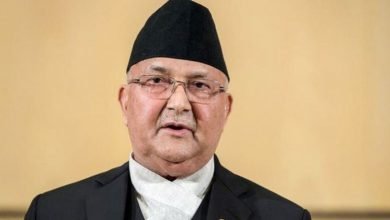Does Nepal want a return to Monarchy? Thousands of pro-monarchy protestors clashed with authorities, leaving 30 injured.
Protestors stormed Kathmandu sloganeering in favour of King Gyanendra. Frustrated by political instability and corruption, they want a return to 'monarchy' and reinstation of 'Hindu Rashtra'.
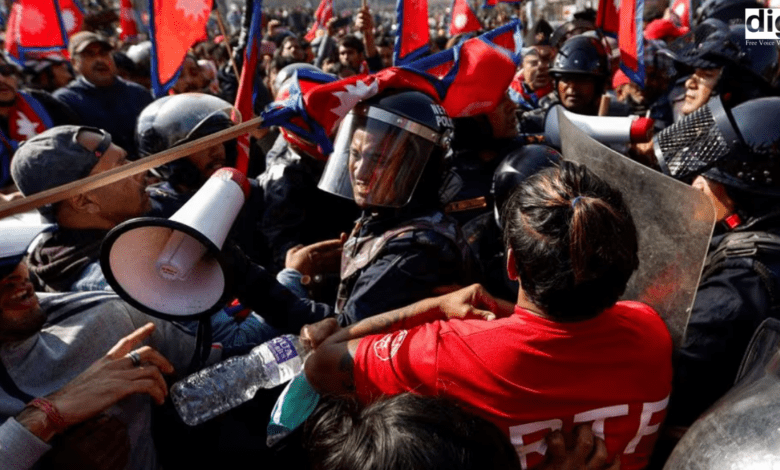
On November 23rd, Kathmandu witnessed waves of pro-monarchy protesters and demonstrators storming into the national capital, waving the national flag and coming to blows with the Nepalese authorities and bureaucrats. If you watch this footage, it will remind you of phenomenal movements like the Quit India Movement or the Russian Revolution! However, the cause for such uproar couldn’t be further from the driving forces behind most revolutions post the 20th century.
Thousands of Nepali protestors are taking the law into their hands to reinstate the country’s monarchy by dissolving its republic democratic structure! These protests are being organised under a loosely knit movement called the “Rashtra, Rashtriyata, Dharma-Sanskriti Aur Nagarik Bachao Andolan” (Movement for the protection of the nation, nationalism, religion, culture, and citizenship).
The protestors clashed with the authorities, where the latter thrashed them with bamboo batons, fired tear gas, and unleashed water cannons. Reports suggest at least 30 people got injured, including five police officers!
Durga Prasain, a preeminent Nepalese businessman, has emerged as the face of this movement, and their demands are pristine:
- Resignation of the elected Maoist Prime Minister Pushpa Kamal Dahal (Prachanda) so that King Gyanendra Bir Bikram Shah Dev reacquires the helm as Nepal’s functioning monarch.
- Abandon secularism and make Nepal a ‘Hindu Rashtra‘ again, as it was before 2008.
- Return of constitutional monarchy (as was promulgated by former monarch King Birendra in 1990) where all parties shall contest for the Prime Minister’s chair, but the real power shall remain with the king.
Do their demands not sound regressive? Haven’t they read history textbooks? Aren’t they familiar with the sublime concepts of ‘liberty, equality, and fraternity’? The answer: Even if they were aware of their constitutional rights and the benefits of democracy, the Nepalese government’s abject failure in governance has left little option for them.
A decade of ‘democracy,’ infested with corruption and political instability, has done more harm than good. Let me acquaint you with the complex history of the Himalayan nation before delving deeper.
Nepal’s wavering stance of monarchy and republic:
Until 2008, Nepal had been a 240-year-old monarchy. However, the kings were always put in a tough spot owing to resistance put forward by the country’s Maoist insurgents. Between 1996 and 2006, these Maoist insurgents fuelled a full-fledged civil war where 17,000 Nepalese lives were lost!
In June 2001, Nepal witnessed terror unfold as an allegedly intoxicated prince, Dipendra, went on a killing spree and murdered nine members of the royal family, including the then-incumbent monarch, King Birendra! To evoke much suspicion, the younger prince Gyanendra and his family survived the regicide, and his crowning conjured a fierce outrage.
Despite King Gyanendra’s desperate attempts at wading the political storm, the Maoists successfully managed to channel the outrage into overthrowing the monarchy. In 2006, after years of bloodbath, the king was forced to abandon his authoritarian regime and introduce democracy. In 2008, the newly elected parliament declared Nepal a secular democratic republic with an elected president as its head instead of a monarch.
Since then, King Gyanendra has been living the life of a private citizen with no power or state protection. Although he has some support from the Nepalese, his chances of getting reinstated to the throne appear rather slim.
Why do some Nepalis want an end to their ‘democratic system’?
One word: Political instability. Presently, Nepal’s lower house of Parliament (House of Representatives) has 275 seats, and the Nepali Congress, under the leadership of Sher Bahadur Deuba, has secured the highest seats (80). The party with the second most seats is the Communist Party of Nepal (Unified Marxist-Leninist), with KP Sharma Oli at its helm.
Now, guess who is Nepal’s incumbent Prime Minister or the party in power? It is Pushpa Kamal Dahal ‘Prachanda’ of the Communist Party of Nepal (Maoist-Center) with 30 seats after entering into a coalition with the Nepali Congress (outside the left-front coalition), and this is not as uncommon as you might think. In Nepal, parties can make any compromise to get to power. Thus, Nepali voters are accustomed to seeing their elected leaders compromising their ideology to forge any alliance that they find politically rewarding! Hence, both ruling and opposition parties appear to be power-hungry, unethical, and corrupt.
Since 2008, Nepal has seen ten different governments! Since 2015, Nepal has seen five different Prime Ministers taking oaths, and six of their Prime Ministers have served less than one year in office!
Nepal is in ruins concerning its economy as well. Rampant unemployment (19% unemployment among the youth), inflation (averaging 7.7%), financial crisis, and poor governance have put the state to the brim of chaos! With the dearth of a systematic banking structure, the Nepalis are also deeply agitated against the recurrence of scams (they have been robbed of their hard-earned money) by fraudulent micro-finance companies and crony cooperatives with corrupt politicians as their patrons.
Infrastructural development, healthcare facilities and education are all limited to Kathmandu, and the rest of the country lacks even a rudimentary social security network! Nepal’s young workforce has been actively leaving the country to seek a better standard of living in the Middle East, South Korea, and Malaysia. The official estimate illustrates that over 7.5 lakh Nepalis emigrated in 2022!
Given all these, the agitation in Nepal is understandable if not acceptable. However, returning to monarchy now shall be equivalent to jumping from a frying pan to a fire! Monarchy can never be an alternative to a functioning democracy, and the people of Nepal must realise this.
Perhaps all this chaos is a gesture to jolt the Nepali politicians from slumber. However, with their next general elections four years away, nobody knows which direction this movement shall head to!
